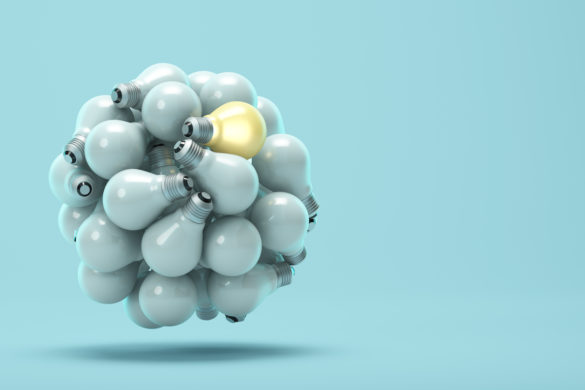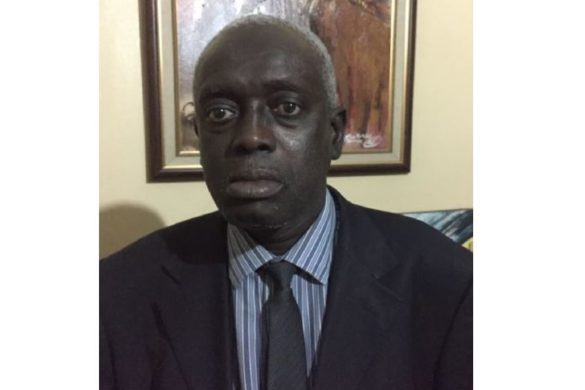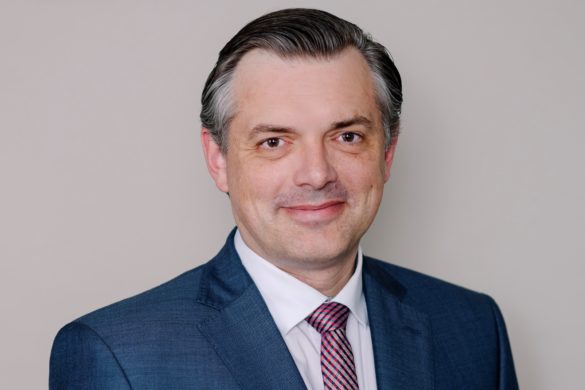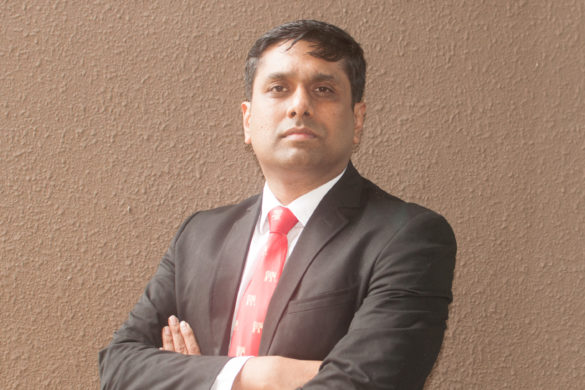Professor Clare J Fowler CBE, FRCP is an Emeritus Professor of Uro-Neurology at UCL and formerly consultant at the National Hospital for Neurology & Neurosurgery.
Professor Fowler, EAN congratulates you on the CBE, which was awarded to you in 2012 for ‘services to Uro-Neurology’.
In this interview, we would like to explore the birth of the neurological subspecialty – Uro-Neurology.
David B. Vodušek (DBV): Can you tell us about your training and how you ended up looking after neurological patients with uro-neurological symptoms?
Clare J Fowler (CJF): My early training included neurology at a junior level, but when it came to choosing a career path I was advised to pursue clinical neurophysiology, on the grounds that it could be a ‘suitable’ job for a woman with children. Furthermore, there was a UK shortage of consultant neurophysiologists.
Early on in my research career in clinical neurophysiology I was approached by a trainee urologist, also in his research years, who had been at a meeting where ‘sphincter EMG’ was discussed. What did I know about it? Roger Kirby has since had a highly successful urological career based on his willingness to engage with others and collaborate with them to make best of their skills. Together we started to record sphincter EMG in patients with multiple system atrophy, the subject of his MD, but also a series of younger women with unexplained urinary retention in the urology ward awaiting surgery, and heard some extraordinary EMG sounds!
Based on publications arising from that collaboration I was somewhat taken aback to meet Dr Christopher Earl on the pavement of Queen Square one evening, who said with his (fondly remembered) amused smile, that the Medical Committee of the National Hospital for Nervous Diseases had just appointed me to the session relinquished by a retiring consultant urologist. This was something of a surprise and an appointment process that by modern days would be considered worse than ‘irregular’.
When first appointed I thought that my job would be to continue with a neurophysiological approach to bladder problems, but it quickly became apparent to me that patients with neurological diseases wanted effective treatment of their genito-urinary symptoms, preferably without surgery. This led to a real journey of discovery employing both established low-tech, non-surgical treatment methods and taking part in trials of new therapies and the birth of ‘Uro-Neurology’.
DBV: How and when was the term Uro-Neurology coined?
CJF: In 1985, early on in my career at The National, it was pointed out to me that I knew less about urology than neurology and whereas urologists interested in neurological problems called themselves ‘neuro-urologists’, I would be better to be known as a ‘uro-neurologist.’
This was good advice and certainly served to distinguish me from those with a urological background: I was an electrician, whereas they were the plumbers of the urinary system.
DBV: EANpages has recently interviewed Prof. Madersbacher, a world reknown neurourologist, who had established a unique Neuro-urological unit within the Department of Neurology in Innsbruck, Austria, being convinced that not only spinal cord injury patients but also many populations of neurological patients have neurogenic uro-ano-genital dysfunction in need of specialised care.
Your contribution is even more remarkable, as you achieved to organise a department of Uro-neurology at the National Hospital, Queen Square. How did this happen?
CJF: Although I started out with the intention of improving the continence of hospital inpatients, my practice rapidly expanded into an outpatient referral service. Patients were referred with the question asked, is there a neurological cause for this patient’s bladder symptoms? And of course the service did not remain confined to bladder symptoms, soon patients with bowel symptoms as well as sexual dysfunction were coming to the clinic.
It was by great good fortune that at that time various non-surgical treatment methods became available to treat bladder and sexual dysfunction and there were many opportunities to take part in trials of new therapies. Attempts to de-afferent the bladder with intra-vesical agents were scientifically sound and were of theoretical importance, but were not so clinically successful. Sacral neuromodulation proved to be highly effective for some young women with urinary retention, sildenafil citrate (Viagra) worked particularly well in men with MS and botulinum toxin injection into the bladder wall to treat urgency incontinence was brilliant. A number of trainee urologists worked on these projects as research fellows and, together with the longer term appointed nurses, we created the department of Uro-Neurology.
One of the critical factors in establishing the department at The National Hospital was that the hospital was then, as it is now, a separate specialist hospital, dealing almost exclusively with neurological problems. Had the hospital been subsumed into a general hospital, as was so often the fate of other single speciality hospitals in London at that time, the patients would have been referred to existing services therein, so this was an instance when the hospital’s relative isolation served to allow new development. Since that time the Institute of Neurology has become part of University College London and the National Hospital part of the highly successful UCLH group of hospitals, and many patients are referred accordingly, but National Hospital inpatients continue to be well served by the convenience of being seen at Queen Square and the Uro-Neurology outpatient referral service has grown for other reasons.
The close association between the National Hospital and the Institute of Neurology that has always existed, allowed many opportunities for collaborative research and through research publications and an unusual clinical interest of the neurology of the pelvic organs practiced by its consultants, the department became a valued referral centre for the UK.
DBV: What do you think of as the greatest achievement of the department of Uro-neurology in your time?
CJF: ‘Uro-Neurology’ is now on the syllabus for trainee neurologists and I believe my greatest achievement was to give neurologists the message that neurogenic uro-genital disorders matter very much to patients, and are complaints often treatable with simple measures.
Receiving the CBE (Commander of the British Empire) in the Queen’s honours, for ‘services to Uro-Neurology’ was a completely unexpected surprise. On 29th February 2012, I found myself in the Great Room of, Buckingham Palace, in front of HRH Prince Charles, explaining ‘Uro-Neurology’ over a 45 seconds handshake
DBV: The other item that is linked to your work and thus your name – apart from Uro-neurology – is Fowler’s Syndrome. Can you tell us what led to the discovery of this new clinical entity?
CJF: When I first started to see patients with urological problems for a neurophysiological evaluation I was struck by the then urological teaching that urinary retention in young women was of hysterical origin. There was an authoritative American textbook which listed the criteria for recognizing psychogenic factors which might predispose to stress and thus the onset of psychogenic urinary retention. The list included all life’s events which young women are likely to encounter – stress, sexual relationships, worry and bereavement – and one or several of those alleged factors could usually be identified in the history of a young women in urinary retention.
It was in such women that I and my co-research fellow Roger Kirby, recorded a very striking electromyographic signal from the striated muscle of the urethral sphincter, that to me was highly reminiscent of myotonia. However, Dr Robin Willison, the leading EMG authority at The National, pointed out the EMG activity was not actually myotonia but rather a form of complex repetitive discharge activity with a pronounced decelerating component. It was that which produced a sound so much like the underwater recordings of whales.
I also noticed that many of the young women presenting with complete urinary retention had clinical features of polycystic ovary syndrome, a condition which if untreated in overweight girls, causes acne and hirsutism. That observation led to the hypothesis that some form of hormonal imbalance was allowing ephaptic
transmission in urethral sphincter muscle fibres to develop and thus the abnormal EMG signal. Initially it seemed likely the girls’ failure to void was the result of a failure to relax their striated sphincter, the initiating action of micturition, but it was then pointed out to me by Professor Chet de Groat, that contraction of the sphincter has an inhibitory effect on detrusor contraction. This seemed a more likely mechanism because the condition responded remarkably well to sacral neuromodulation, which did not appear to alter the sphincter abnormality but restored bladder sensation and the ability to void.
I encountered considerable difficulties with this hypothesis because urinary retention in young women seemed to keep ‘bad company’. Although I always resisted the recurring suggestion that the problem was of psychological origin I could not deny that the behaviour of many of the young women was ‘difficult’. An explanation emerged in the final few years of my career when the connection between oral opiate analgesics and urinary retention became apparent. For how long this had been a significant association I will never know, because I had not thought to ask the early
cases, but in recent years the prescription of oral analgesics which are opiate based has become a phenomenon of some worldwide concern. In the final analysis it seems that there are three groups of women in retention, those who simply have the abnormal sphincter EMG activity, women who have the EMG activity but who also take tramadol and women who take a lot of oral opiates. The excellent response of all three groups to sacral neuromodulation led to the final hypothesis that the sphincter EMG abnormality may up-regulate spinal endorphins and so exert its inhibitory effect on detrusor contraction. This intoxicating level of spinal endorphins in the sacral cordmay then be further accentuated by exogenous opiates. A study of the effect of neuromodulation in animal models of opiate induced urinary retention is needed to examine this hypothesis further.
DBV: How do you see the present position of Uro-neurology in Europe and in the world, and what about future developments?
CJF: Although the department at The National Hospital is still the department of ‘Uro-Neurology’ it serves patients with a range of pelvic organ problems. These are patients either known to have neurological disease, or patients in whom urologists, colo-proctologists, uro-gynaecologist, urologists and andrologists have been unable to discover a cause for a patient’s symptoms and the question is being asked ‘is there an underlying neurological problem?’ These are problems which affect patients everywhere and key to offering understanding and treatment is the neurological expertise of the consultants in the department, together with the availability of specialist neurophysiological and functional investigations.
Clinicians, well-grounded in neurology, worldwide will need to develop expertise in the diagnosis and management of neurogenic pelvic organ dysfunction. Collaboration with the pharmaceutical industry will be important since it is now well understood how pelvic organ disorders affect the quality of life. The study the neurology of all pelvic organs, bladder, bowel and sexual is an area which will continue to benefit patients for years to come.
Dear Professor Fowler, thank you for the very informative interview! I am sorry we could not go into some of your other interests & achievements, but perhaps a bit can be glanced from the photo you choose for EANpages.
David B. Vodušek, Chair, EAN Communication Committee












